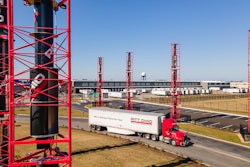Not all fuel economy testing is reliable.
That probably sounds strange coming from a person who is a fuel economy testing evangelist. To be clear, I believe in testing devices to ascertain what type of fuel economy gains they can achieve. However, not all testing methods are equal, nor are all test results directly translatable to real-world fuel savings. And real-world fuel savings are what fleet managers are interested in.
What happens in a wind tunnel, via computer simulation and even on a test track is not necessarily valid if the fleet is not going to see the alleged fuel economy gains when their actual trucks are in operation and spec’d with the tested device.
When you start with an unreliable testing method you are bound to get invalid test results. Consider this: if a test method requires repeatability within a 2% range, how could it possibly be accurate to within only 1%? It can't, however, the trucking industry has been led to believe that is possible and failed attempts under that misleading information have resulted in contradictory results.
It can be difficult to know if a certain testing method is reliable and it can be confusing to sift through the data from multiple sources that have tested a technology. For most fleets, in-service testing is their go-to test method.
Although it sounds ideal, it has major limitations: six to 12 months to complete, 100-plus vehicles to obtain accurate results, or a large margin of error no matter how repeatable a route may be. If it were that simple every fleet would be a fuel expert and would be achieving 9 mpg.
Smaller fleets often lack resources to perform these types of tests and the time and effort it takes to conduct these tests makes them an unattractive alternative to many fleets regardless of size. There are also independent testing companies, like MVT Solutions, that conduct fuel economy tests for device manufacturers, OEMs and fleets. Fleets are busy delivering freight and running fuel economy tests can take valuable time and resources away from their actual work.










